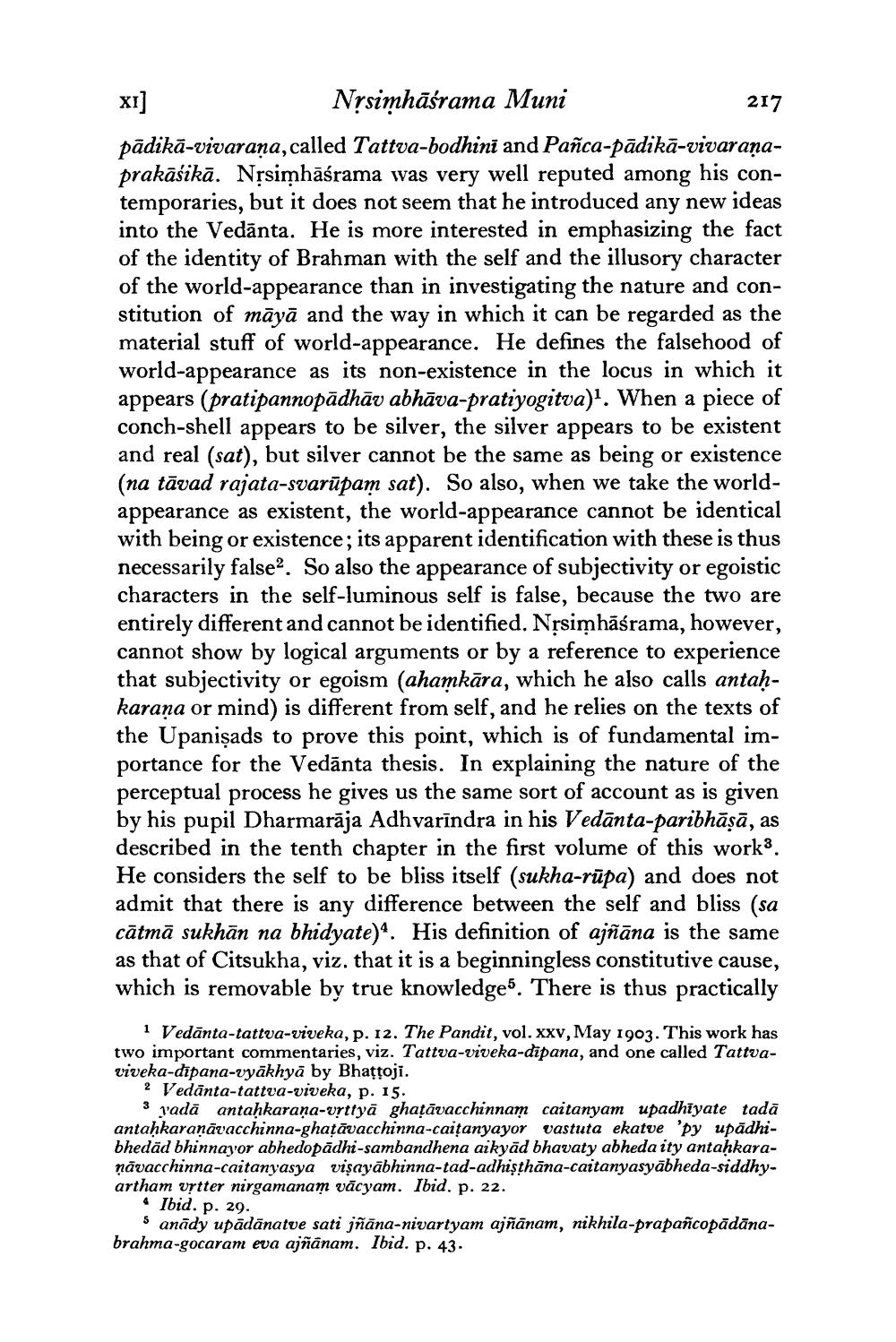________________
XI] Nysimhāśrama Muni
217 pādikā-vivarana, called Tattva-bodhini and Pañca-pādikā-vivarañaprakāśikā. Nșsimhāśrama was very well reputed among his contemporaries, but it does not seem that he introduced any new ideas into the Vedānta. He is more interested in emphasizing the fact of the identity of Brahman with the self and the illusory character of the world-appearance than in investigating the nature and constitution of māyā and the way in which it can be regarded as the material stuff of world-appearance. He defines the falsehood of world-appearance as its non-existence in the locus in which it appears (pratipannopādhāv abhāva-pratiyogitva)'. When a piece of conch-shell appears to be silver, the silver appears to be existent and real (sat), but silver cannot be the same as being or existence (na tāvad rajata-svarūpam sat). So also, when we take the worldappearance as existent, the world-appearance cannot be identical with being or existence; its apparent identification with these is thus necessarily false. So also the appearance of subjectivity or egoistic characters in the self-luminous self is false, because the two are entirely different and cannot be identified. Nrsimhāśrama, however, cannot show by logical arguments or by a reference to experience that subjectivity or egoism (ahamkāra, which he also calls antaḥkarana or mind) is different from self, and he relies on the texts of the Upanişads to prove this point, which is of fundamental importance for the Vedānta thesis. In explaining the nature of the perceptual process he gives us the same sort of account as is given by his pupil Dharmarāja Adhvarīndra in his Vedānta-paribhāṣā, as described in the tenth chapter in the first volume of this work3. He considers the self to be bliss itself (sukha-rūpa) and does not admit that there is any difference between the self and bliss (sa cātmā sukhān na bhidyate). His definition of ajñāna is the same as that of Citsukha, viz. that it is a beginningless constitutive cause, which is removable by true knowledges. There is thus practically
5.
1 Vedānta-tattva-viveka, p. 12. The Pandit, vol. xxv, May 1903. This work has two important commentaries, viz. Tattva-viveka-dipana, and one called Tattvaviveka-dipana-vyākhyā by Bhattoji.
2 Vedānta-tattva-viveka, p. 15.
3 yadā antahkarana-vrttyā ghațāvacchinnam caitanyam upadhīyate tada antahkaraṇāvacchinna-ghatāvacchinna-caitanyayor vastuta ekatve 'py upādhibhedād bhinnayor abhedopādhi-sambandhena aikyād bhavaty abheda ity antahkaranāvacchinna-caitanyasya visayābhinna-tad-adhisthāna-caitanyasyābheda-siddhyartham vstter nirgamanam vācyam. Ibid. p. 22.
4 Ibid. p. 29.
sanādy upādānatve sati jñāna-nivartyam ajñānam, nikhila-prapancopādānabrahma-gocaram eva ajñānam. Ibid. p. 43.




